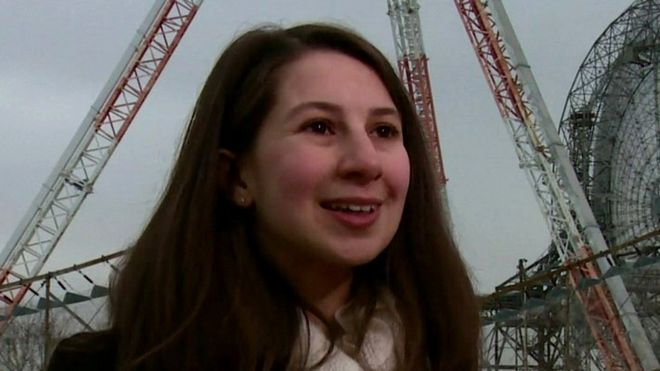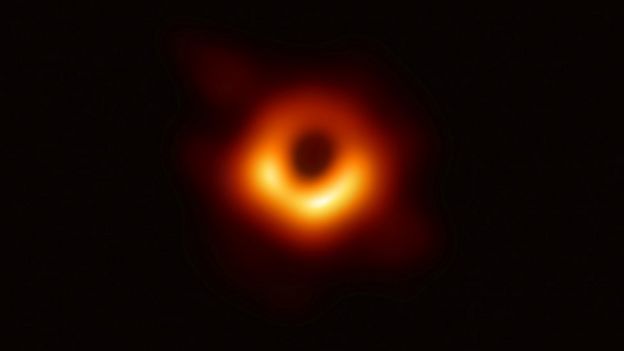Katie Bouman: The woman behind the first black hole image

A 29-year-old computer scientist has earned plaudits worldwide for helping develop the algorithm that created the first-ever image of a black hole.
Katie Bouman led development of a computer programme that made the breakthrough image possible.The remarkable photo, showing a halo of dust and gas 500 million trillion km from Earth, was released on Wednesday.
For Dr Bouman, its creation was the realisation of an endeavour previously thought impossible.
Excitedly bracing herself for the groundbreaking moment, Dr Bouman was pictured loading the image on her laptop.
"Watching in disbelief as the first image I ever made of a black hole was in the process of being reconstructed," she wrote in the caption to the Facebook post.
- Taking the temperature of black holes
- Hawking: Black holes store information
- Dozen black holes at galactic centre
There, she led the project, assisted by a team from MIT's Computer Science and Artificial Intelligence Laboratory, the Harvard-Smithsonian Center for Astrophysics and the MIT Haystack Observatory.

In the hours after the photo's momentous release, Dr Bouman became an international sensation, with her name trending on Twitter.

"Congratulations and thank you for your enormous contribution to the advancements of science and mankind," she tweeted. "Here's to #WomenInSTEM!," which stands for science, technology, engineering and mathematics.
Dr Bouman was also hailed by MIT and the Smithsonian on social media.
"3 years ago MIT grad student Katie Bouman led the creation of a new algorithm to produce the first-ever image of a black hole," MIT's Computer Science & Artificial Intelligence Lab wrote. "Today, that image was released."

The effort to capture the image, using telescopes in locations ranging from Antarctica to Chile, involved a team of more than 200 scientists.
"No one of us could've done it alone," she told CNN. "It came together because of lots of different people from many different backgrounds."



Ingen kommentarer:
Legg inn en kommentar
Merk: Bare medlemmer av denne bloggen kan legge inn en kommentar.